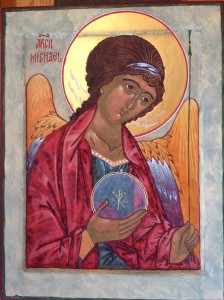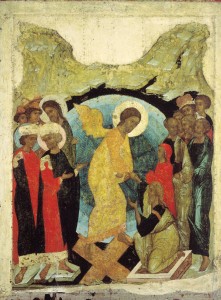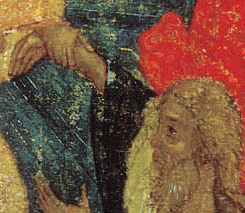As of today my right hand is no longer in a splint. The last six weeks of being functionally left-handed have been full of challenges. Not least of these was the inability to type.
I gave myself a break from blogging. I hope you’ll still find my site and come along for the ride. It has been a time of very rich reflection on what I do here, and I hope to introduce some fun changes in coming weeks and months.
On March 6, 2017 The Presbyterian Outlook published a piece I’d written for them before losing use of my hand. Their editor, Jill Duffield, kindly gave me permission to reprint it here. I hope you’ll click through here and check out The Outlook. Especially if you are a Presbyterian they are the best source you’ll find for news, analysis, and commentary on the denomination.
Here’s my little “Benedictory” essay:
Writing

When people ask what I do for a living I no longer say “seminary professor.” Now, more often than not I say “writer.” True enough, other vocational roles are almost as likely to fill my days: “speaker,” “teacher,” and “parent” are big ones. But writing is the core.
Just now, the word is taking on a new meaning for me: I’m “writing” an icon. In more familiar terms, I’m “painting a picture” of the Archangel Gabriel. It is in the style, techniques, and materials used for the traditional images you see in an Orthodox worship service. People pray before them, kissing them and making the sign of the cross.
It is my second icon. The first was of the Archangel Michael, written during a week long workshop taught by two master iconographers.
Why, to the Orthodox, is this form of painting “writing”? In the Christian East, icons communicate in their own very definite language. It communicates clearly in the scenes and people portrayed, and subtly in symbols of objects and lines, colors and light. They aren’t just decorations.

When you do learn to read their language, they make profound theological points. One Orthodox priest friend pointed out to me that in the icon of the Resurrection, Christ is lifting Adam and Eve to life. He doesn’t grasp their hands so that they can help pull themselves up. Jesus holds their wrists, doing all the lifting himself — because salvation is by grace alone.

But none of this answers the “why?” question. Why am I, a Presbyterian Teaching Elder with a Ph.D. on the theology of John Calvin, writing a Byzantine icon?
It seems like a direct contradiction of my beloved Heidelberg Catechism:
97 Q. May we then not make any image at all?
God can not and may not
be visibly portrayed in any way.Although creatures may be portrayed,
yet God forbids making or having such images
if one’s intention is to worship them
or to serve God through them.
Maybe the contradiction isn’t quite so direct. I’m not portraying God: Angels are creatures. Whew.
But what if I were writing an icon of Jesus? Jesus is “God with us,” the incarnation of the second Person of the Trinity. That would mean I was making a painting of God, right?
Right. But the Orthodox would say it’s still okay: God chose to become human, to present himself in matter. You could have snapped a photo of him with your iPhone if you’d had one handy in A.D. 30, and you can make a painting of him today.
Do I aim to worship this icon? No. Dodged another one there: Nobody (at least no biblically informed Christian) worships an icon. I worship God — only. The icon is more like a window I look through toward the God whose light shines in his creatures.
The answer? Writing an icon is a form of prayer. I write and teach about prayer. I love learning how Christians deepen their connection with God, finding ways to speak, and to listen, and to simply abide in intimate communion.
But it is more than learning about a new form of prayer. I am actually praying, because I need to pray. The goal is not a beautiful picture. The goal is to know God better, to draw into closer union with Christ.
Every step is about contemplative prayer. It looks like I’m putting paint on a board, but I’m being led into prayer, contemplating how God’s light shines in creation. It is one way God is writing his image in me anew.


Leave a Reply